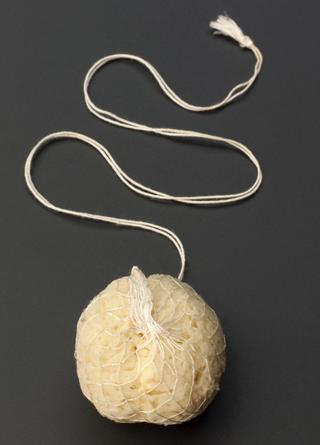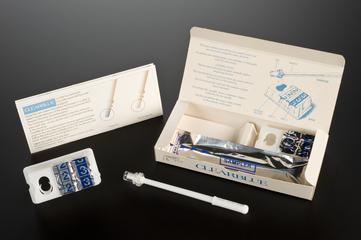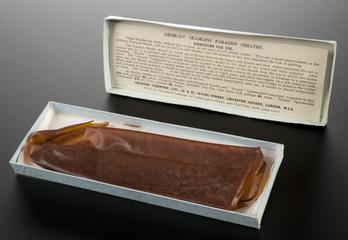




Fillet, whalebone, adjustable, Japanese, tenuously 1904, whalebone and wood
A fillet was a flexible appliance. It looped around the baby, usually at the head. The physician then gently pulled to assist delivery. Fillets were one of the first devices assisting childbirth that caused minimal danger to mother and child. This Japanese whalebone example offered strength and flexibility. It was also slightly more hygienic than other materials used such as silk. The adjustable sliding handle moves up and down. This increases or decreases the size of the loop, like an adjustable snare. It allowed easy insertion into the birth canal before being slipped onto the child.
Details
- Category:
- Obstetrics, Gynaecology & Contraception
- Collection:
- Sir Henry Wellcome's Museum Collection
- Object Number:
- A212628
- Measurements:
-
overall: 550 mm x 90 mm x 20 mm, .055kg
- type:
- obstetrical fillet
- credit:
- Wellcome Trust (Purchased from Stevens)




